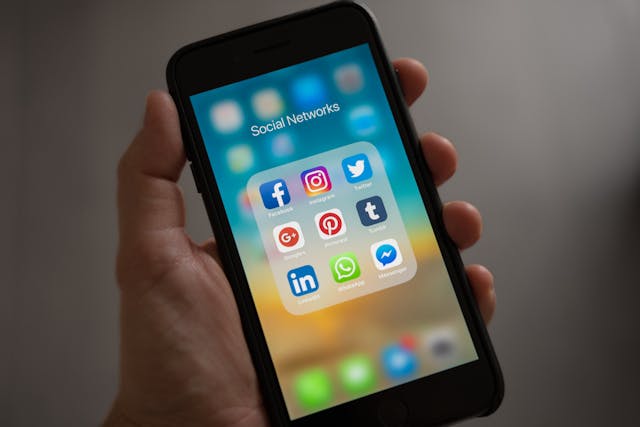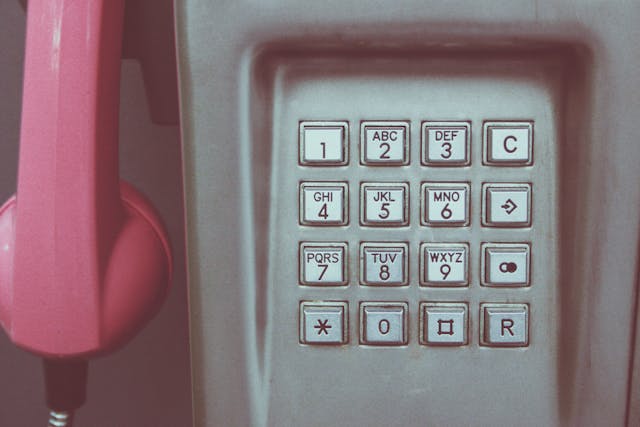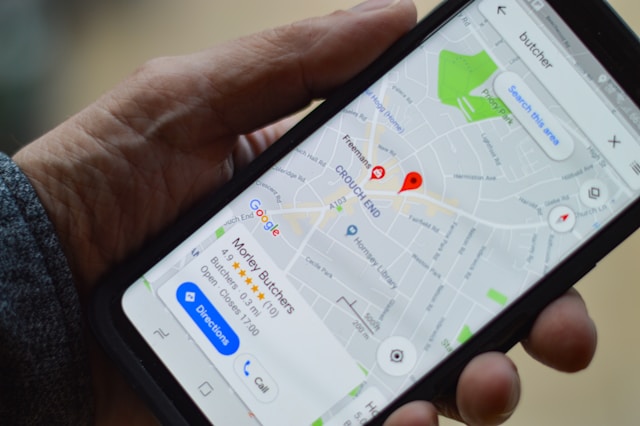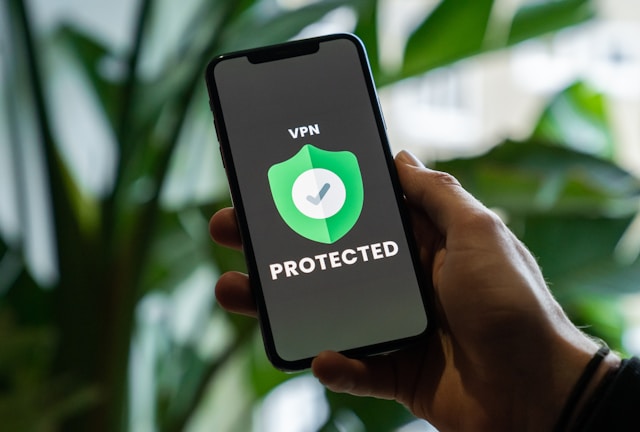Do you want to know how to track a phone to start sending promotional messages? This is a key step in geolocation marketing campaigns.
You want to target users with a current location near your place of business. Several strategies exist for tracking phone numbers, such as using content management systems (CRM) and location-tracking apps. We’ll provide the details so you can make the right choice for your business.
Read on to discover how to track a cell phone number with different strategies!

Table of Contents
Top Reasons To Track Cell Phones for Marketing
Are you wondering how to track a phone number? Let’s start by examining some of the top reasons you may want to track cell phones for marketing purposes. You’ll see that there is a big advantage to your overall marketing campaign.
Here are some of the top ones for your consideration:
- Enhanced customer insights: Tracking cell phones provides valuable data on consumer behavior, preferences, and locations. Therefore, marketers can analyze this information to gain insights into target audiences and allow for more personalized marketing strategies. Additionally, companies can optimize campaigns by understanding when and where customers engage with their brands.
- Targeted advertising: Choose the right target device, and you can improve the accuracy of your geolocation marketing. This reduces the amount of money you waste on marketing to the wrong mobile devices. Also, by serving ads tailored to specific demographics or interests, companies can improve the return on investment (ROI).
- Competitive advantage: Utilizing cell phone tracking in marketing provides a significant competitive edge. That’s because businesses that leverage location data to identify trends and adapt their strategies faster than competitors. This ability to analyze consumer movements and preferences enables brands to anticipate market changes quickly.
- Performance measurement: Tracking cell phones facilitates effective performance measurement of marketing campaigns. Businesses can assess the impact of their strategies by analyzing foot traffic data, engagement rates, and conversion metrics. This information enables marketers to refine their approaches and allocate resources to the right target phones.
- Local market understanding: Cell phone tracking provides insights into local market dynamics and enables businesses to identify regional trends. Therefore,
brands can tailor their products and marketing efforts to resonate with local audiences. This will improve the market penetration in specific regions and boost revenue.

How To Track a Cell Phone Number: Top 6 Methods
There are a number of strategies available for tracking cell phone numbers. You can select the method that best matches your location-based marketing strategies to get the right results. Keep reading for a summary of how to track a cell phone number.
1. Use of Tracking Software
Utilizing specialized tracking software allows marketers to monitor customer interactions. These tools can track when a customer opens a message or clicks on a link. It’s highly valuable insights into engagement levels that you can use as part of a broader marketing plan.
Additionally, many platforms offer analytics to see which messages are most effective. The end result enables marketers to tailor future communications.
However, it’s crucial to ensure compliance with privacy regulations. That’s because unauthorized tracking can lead to legal issues. You need to keep up to date on the latest regulatory requirements when taking part in geotargeting marketing.
2. Mobile Apps With Location Tracking
Incorporating location-tracking features in mobile apps can provide marketers with precise user data. Therefore, by prompting users to opt-in to location services, businesses can gather information on user behaviors, preferences, and foot traffic patterns.
This data can inform your marketing campaigns and help target promotions based on geographical locations. Additionally, businesses can analyze trends and optimize store layouts to sell more of the products that are popular.

3. Social Media Analytics
Social media platforms offer robust analytics tools that allow marketers to track user engagement and behavior based on phone interactions. You can start by analyzing metrics such as likes, shares, and comments. This will give you insight into the preferences of your target audience.
Additionally, social media can serve as a channel for direct marketing. Hence, you can reach customers through targeted ads based on their online behavior. Overall, by leveraging these insights, you can refine your marketing strategies to better meet customer needs.
4. SMS Marketing Campaigns
SMS marketing is a powerful tool for direct communication with customers. You’ll need to utilize tracking codes in SMS links, which allow marketers to analyze response rates and customer engagement. Here are some of the best practices for SMS marketing that you should follow:
- Get permission: Always obtain explicit consent from recipients before sending SMS messages. This ensures compliance with regulations and builds trust with your audience. Additionally, you can collect permission through sign-up forms, promotions, or during customer interactions.
- Know your audience: Understanding your audience is crucial for effective SMS marketing. Therefore, segment your contacts based on demographics, preferences, and behaviors to tailor your messaging. This targeted approach helps ensure that your messages resonate with specific groups. In most cases, it will also drive the conversion rate through the roof.
- Keep it short and simple: You need to limit the character count of messages due to SMS character limits. Furthermore, aim to communicate your main point quickly by using clear language that is easy to understand. You can do this by focusing on a single call to action to guide recipients on what to do next.
- Timing matters: The timing of your SMS messages can significantly impact their effectiveness. Hence, send messages during appropriate hours to avoid disrupting your audience. This is typically early mornings or late evenings. Additionally, consider the time zones of your recipients to optimize engagement.
- Provide value: Make sure your SMS messages offer something valuable to your recipients. This could be exclusive discounts, promotions, or helpful information encouraging engagement. That’s because when recipients perceive value in your messages, they are more likely to open, read, and act on them.

5. CRM Systems
Implementing a CRM system enables businesses to track and manage customer interactions effectively. That’s because CRMs store valuable data such as phone numbers, communication history, and purchase behavior. You can combine this data to launch highly targeted geolocation marketing campaigns.
This data-driven approach helps improve customer satisfaction and loyalty. That’s because you’ll offer a better overall service by sending marketing messages. It means you’ll reduce the number of times your customers feel frustration for receiving promotional content.
6. Geofence Marketing
Geofencing uses global positioning system (GPS) technology to create virtual boundaries around specific locations. When potential customers enter these areas, they can receive targeted marketing messages.
This method is particularly effective for local businesses aiming to drive foot traffic. However, clear communication regarding location tracking is essential. It is important that customers opt-in for geofencing to ensure compliance with privacy regulations. Also, regular assessments of campaign performance can optimize results.

How To Track a Phone Number: Find Location by Phone Number
There are several mistakes you must avoid when you want to find a location by phone number. This is especially true for businesses that don’t want to get into legal trouble or lose the trust of their customers.
Keep reading for how you can get the real-time location of mobile users without making mistakes:
- Neglecting legal and ethical considerations: A critical mistake is failing to adhere to legal and ethical guidelines when attempting to track a phone number. Many countries have strict privacy laws regulating the tracking of individuals without their consent. This includes the GDPR in Europe and CCPA in California. Ignoring these regulations can lead to severe legal consequences, including fines and criminal charges.
- Using unreliable or invasive tracking methods: Don’t make the mistake of opting for unreliable tracking methods, such as using unauthorized third-party apps or services. This can compromise the accuracy and security of your geolocation data marketing campaigns. Many of these tools can be scams or malware that jeopardize personal data. Additionally, invasive tracking techniques may cause privacy concerns or backlash from the individuals you track.
- Overlooking user consent: A significant mistake is failing to obtain explicit consent from the individual whose location is being tracked. Also, tracking someone’s phone without their knowledge is not only unethical but often illegal. Hence, always communicate transparently about why you are tracking the individual’s location and how you will use the data.
- Failing to verify location accuracy: Assuming that the location data received is always accurate is a common mistake. Various factors can impact the geolocation data accuracy, such as GPS signal quality, network issues, or the phone’s settings. Therefore, always verify the data and cross-check it with other information before making decisions based on location.

Find My Phone by Number
Are you wondering how to find my phone by number? Tracking a phone by its number can be useful for locating lost devices, but it is important to understand the limitations. Direct tracking using just a phone number is usually impossible without specialized services.
For Apple devices, you’ll typically need built-in features like Find My iPhone so users can track their phones effectively. It’s important to be proactive and set up a phone tracking service before losing your phone to make device recovery easier after it is lost.
For iPhone users, logging into iCloud and using the Find My app can help pinpoint the device’s location.
In comparison, Android users can do the same by accessing their Google account and using the Find My Device feature. These methods provide real-time tracking and additional options such as locking the device or erasing data to protect personal information.
If you need to track a family member’s phone, consider using family tracking apps requiring mutual consent. Furthermore, always prioritize privacy and legal considerations when tracking a phone by its number.

Frequently Asked Questions
Is it legal to track a phone?
Tracking someone’s phone without their consent is generally illegal and considered an invasion of privacy. Laws vary by region, but many jurisdictions require explicit permission from the person you track.
Therefore, don’t forget to communicate your intentions clearly and obtain consent before tracking.
For legitimate purposes like parental control or employee monitoring, ensure compliance with local laws and regulations. This will help you avoid legal repercussions and maintain trust.
How accurate is phone tracking?
Phone tracking accuracy varies based on several factors, including GPS signal strength, device settings, and the method you use. GPS generally provides the highest accuracy to within 5 to 10 meters, while Wi-Fi-based tracking may have a wider range.
However, factors such as poor signal conditions or disabled location services can affect reliability. Therefore, always verify location data and consider multiple sources when assessing accuracy to ensure informed decision-making.
Can tracking a phone drain its battery?
Yes, tracking a phone can drain its battery, which is especially true if location services are constantly active. You’ll find that GPS tracking uses significant power when there are frequent updates.
Users can adjust settings to mitigate battery drain by reducing the frequency of location updates or switching to Wi-Fi-based tracking when possible. Additionally, closing unused apps and optimizing battery settings can help preserve power while still allowing for effective tracking.
How can I track my lost phone?
To track a lost phone, use built-in tracking features like Find My iPhone for Apple devices or Find My Device for Android devices. Furthermore, ensure you enable these features prior to the loss.
Can I track a phone with just the phone number?
Tracking a phone using only the phone number is not generally possible without specialized services or consent from the individual. Some apps and services claim to offer this feature, but they often require additional information or permissions. This is vital when learning how to track a person’s phone.
It’s important to prioritize ethical and legal guidelines when attempting to track someone’s location. Therefore, always obtain explicit consent from the individual and consider using legitimate tracking methods available through reputable apps.

How To Track a Phone: Is It Worth It for Businesses?
Tracking the phones of your potential customers can be highly worth the effort to get more sales and foot traffic. Craft the right marketing messages and send them at the correct time of the week and day. This can lead to a large response from your target market, and it’s a popular marketing strategy because it works.
Use the methods for how to track a phone in this article to your advantage. It’s a good idea to use more than one method to improve the accuracy of your geolocation data. After all, technologies can lack accuracy, and you can reduce this problem by hedging your bets.
Do you want to access geolocation data to pinpoint your customers on a map? Then, turn to geoPlugin for a tool to help you transform IP addresses into actionable geolocation data. We have a long list of satisfied customers; you can be the next one.
So what are you waiting for? Start using geoPlugin today, and don’t look back!













